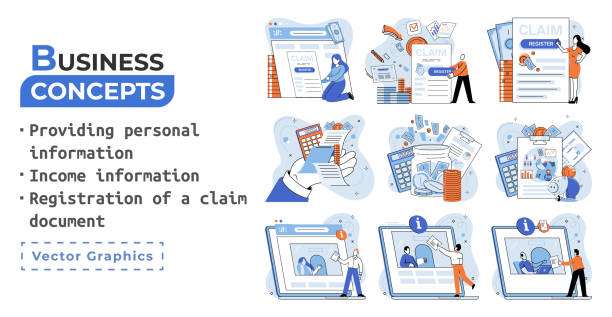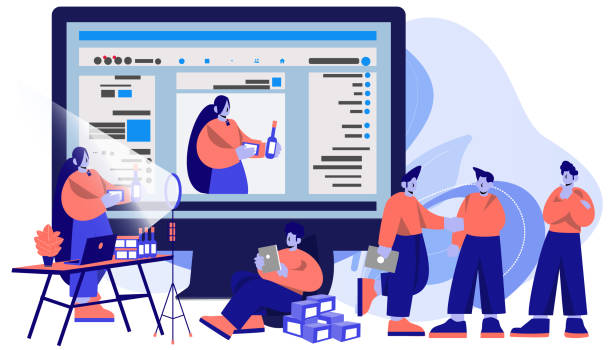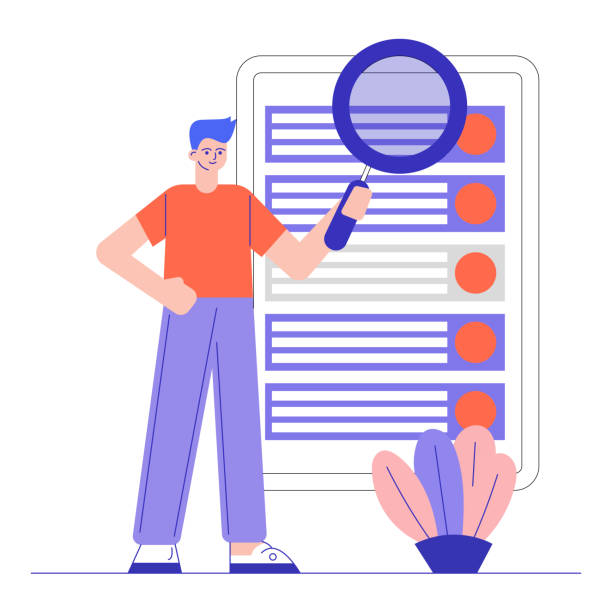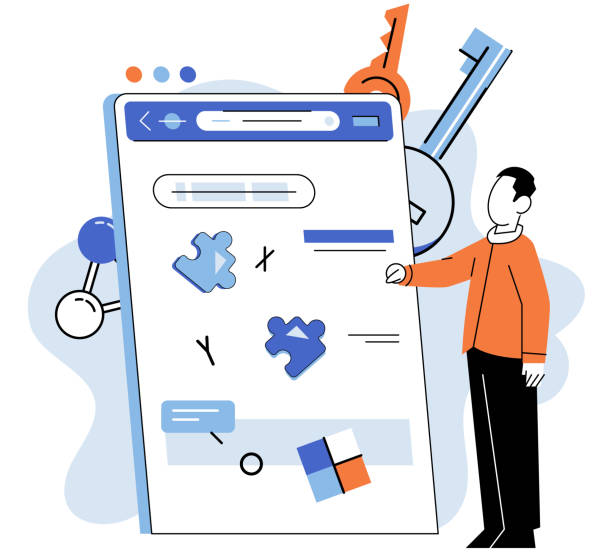Introduction to the Importance of Speed in Today’s Web World

In today’s digital world where speed is paramount, fast website design is no longer a luxury option, but an undeniable necessity.
Users expect websites to load in less than a few seconds, and any small delay can mean losing visitors, customers, and even credibility.
Website loading speed not only directly impacts user experience but is also a crucial factor in #SEO ranking.
Search engines like Google prefer fast websites because they provide a better user experience, placing them higher in search results.
This educational and explanatory article will help you gain a deeper understanding of the factors affecting website speed and introduce you to practical solutions for achieving fast website design.
We will show you how various optimizations can significantly increase your website’s speed and keep you ahead in the online competition.
Ignoring speed can mean missing countless opportunities in today’s highly competitive market.
Does your company’s website create a professional and lasting first impression on potential customers? Rasawab, with its professional corporate website design, not only reflects your brand’s credibility but also opens a path for your business growth.
✅ Create a powerful and trustworthy brand image
✅ Attract target customers and increase sales
⚡ Get free consultation
Key Factors Affecting Website Speed Reduction or Increase

To achieve fast website design, we first need to understand what factors affect website loading speed.
These factors can be broadly divided into two categories: user-side (Frontend) factors and server-side (Backend) factors.
On the user side, the size of images and videos, the number and size of CSS and JavaScript files, and the use of heavy web fonts are among the main reasons for website slowness.
Loading resources from multiple external sources can also increase load time.
On the other hand, on the server side, hosting and server quality, database type and its optimization, inefficient coding, and lack of proper caching can all lead to website slowness.
This section of the article analytically and specialized examines these factors so that you can identify the root causes of potential problems.
Understanding these factors is the first step on the path to optimizing and increasing website speed.
Optimizing Images and Frontend Code for Increased Speed

One of the most important parts of achieving fast website design is optimizing frontend elements.
Images usually account for the largest volume on web pages.
Compressing and optimizing images without significant quality loss, using next-generation image formats like WebP, and lazy loading images (loading only when needed by the user) can have a dramatic impact on speed.
In addition to images, CSS and JavaScript files should also be minified to reduce their size.
Merging small CSS and JavaScript files into one also reduces the number of HTTP requests to the server and helps with faster loading.
Using the guidance in this section will help you become familiar with more advanced frontend optimization techniques and take an effective step towards increasing your website’s speed.
These steps are requirements for a fast and efficient website design.
| Optimization Method | Description | Benefits for Speed |
|---|---|---|
| Compression | Reduces image file size without significant quality loss. | Reduces load time, decreases bandwidth consumption. |
| Resizing | Adjusting image dimensions to suit display needs (not larger than necessary). | Prevents loading images with dimensions larger than the display area. |
| Modern Formats (WebP, AVIF) | Using new image formats with better compression. | Significant reduction in file size while maintaining high quality. |
| Lazy Loading | Loading images only when the user scrolls near them. | Increases initial page load speed, reduces resource consumption. |
| Using CDN | Delivering images from the nearest server to the user. | Reduces latency in image loading. |
Optimizing Server and Backend for Outstanding Performance

Alongside frontend optimizations, server and backend optimization play a vital role in fast website design.
Choosing a strong and reliable hosting is the first step.
High-quality servers, equipped with powerful hardware and sufficient bandwidth, can drastically reduce server response time.
Database optimization, including proper indexing, removal of duplicate and unnecessary data, and execution of efficient queries, are other important measures.
Using optimized programming languages and lightweight frameworks can also contribute to better backend performance.
This specialized and explanatory section will help you become familiar with more advanced concepts in server optimization and leverage your infrastructure’s maximum capabilities to deliver a fast website design.
Proper server resource management and configuration can make a significant difference in user experience.
Does your current website inspire the trust that potential customers should have in your business? If the answer is no, it’s time to have a professional and impactful corporate website with Rasawab.
✅ Fully customized design tailored to your brand identity
✅ Increase lead generation and business credibility in the eyes of customers⚡ Contact us for a free consultation!
The Role of CDN and Caching in Accelerating Websites

Two key concepts that play an undeniable role in fast website design are Content Delivery Network (CDN) and Caching.
CDN works by replicating your website’s content on multiple servers across the globe, ensuring that content is delivered from the closest server to the end-user.
This significantly reduces latency and increases loading speed, especially for users in geographical locations further away from the main server.
Caching also means temporarily storing website data and static content (such as images, CSS, and JavaScript) in the user’s browser or on the server.
This ensures that on subsequent visits or similar requests, the website loads faster without needing to be reloaded from the server.
This informative and specialized section teaches you how to achieve a fast website design and provide an unparalleled user experience by correctly implementing CDN and caching mechanisms.
The Importance of Speed in Mobile and Responsive Design

Given the ever-increasing number of mobile users, website speed on mobile devices is of particular importance.
A responsive website that is properly optimized for mobile not only provides a better user experience but will also be more successful in mobile SEO rankings.
Fast website design on mobile requires specific approaches, including using images with appropriate dimensions and quality for smaller screens, optimizing CSS files for different devices, and reducing the use of heavy JavaScript.
Additionally, a Mobile-First architecture, which means designing for mobile first and then extending it for desktop, can help achieve higher speeds on mobile devices.
This educational and analytical section shows you how to design a website with a comprehensive approach that offers excellent speed and performance on any device.
Achieving fast website design on mobile is the key to success in today’s world.
Website Speed Test Tools and Result Analysis

After implementing the necessary optimizations for fast website design, an important stage called testing and results analysis arrives.
There are numerous tools for measuring website speed, each providing valuable information.
Tools such as Google PageSpeed Insights, GTmetrix, Pingdom Tools, and WebPageTest measure various metrics like full page load time, Time to First Byte (TTFB), First Contentful Paint (FCP), and Largest Contentful Paint (LCP).
These metrics help you identify your website’s strengths and weaknesses and understand which areas still need improvement.
This guidance and analytical section explains how to use these tools and interpret their results so you can take further steps for more optimizations.
Continuous use of these tools is essential for maintaining fast website design.
| Tool Name | Key Features | Advantages |
|---|---|---|
| Google PageSpeed Insights | Performance score for mobile and desktop, optimization suggestions. | Aligned with Google’s criteria, simple and practical. |
| GTmetrix | Waterfall analysis, in-depth reports, option to choose test location. | Comprehensive and precise information for developers. |
| Pingdom Tools | Performance display over time, testing from multiple locations, detailed report. | User-friendly interface, suitable for periodic monitoring. |
| WebPageTest | Testing from different browsers and locations, page load video, extensive details. | Powerful and highly accurate tool for in-depth analysis. |
The Impact of Website Speed on SEO and User Experience

As previously mentioned, website speed plays a dual and very important role in the digital world: it affects both SEO and User Experience (UX).
From an SEO perspective, Google and other search engines place fast websites higher in rankings due to providing a better user experience.
A slow website can lead to a high Bounce Rate, as users won’t wait and will leave the page, which is a negative signal for search engines.
From a user experience perspective, fast website design greatly increases user satisfaction.
Users prefer fast websites, are more likely to return, and are more inclined to interact with them or make purchases.
This informative and analytical section shows you how every millisecond of delay can mean losing revenue and credibility, and why investing in fast website design is a smart investment.
Do you have an e-commerce website, but your sales aren’t as expected? Rasawab solves your problem forever with professional e-commerce website design!
✅ Significant increase in conversion rates and sales
✅ Unparalleled user experience for your customers
⚡ Click to get free consultation with Rasawab!
Choosing the Right Platform and Framework for High Speed

One of the initial and very important decisions on the path to fast website design is choosing the right platform or framework.
Content Management Systems (CMS) like WordPress, Joomla, and Drupal each have their own advantages and disadvantages.
WordPress, with its numerous plugins, can sometimes slow down due to excessive use of heavy plugins, but with the selection of lightweight plugins and proper optimization, acceptable speed can be achieved.
On the other hand, frameworks like Laravel, React, or Vue.js offer greater flexibility for developers and, with optimized coding and efficient structures, can deliver excellent speed results.
This specialized and guidance section helps you choose the best option for achieving a fast website design, considering project needs and the development team’s expertise level.
Smart decision-making at this stage will be the foundation of your website’s future speed.
Continuous Maintenance and Monitoring to Preserve Website Speed

Fast website design is not a one-time process, but rather requires continuous maintenance and monitoring.
New content, outdated plugins, server errors, or sudden traffic spikes can gradually reduce your website’s speed over time.
Therefore, it is necessary to regularly monitor your website’s speed using the tools introduced in chapter seven.
Regularly updating the Content Management System, plugins, and theme, periodically reviewing and optimizing the database, and clearing the website cache are among the actions that should be performed continuously.
Additionally, checking server logs to identify and resolve potential errors is also of great importance.
This explanatory and engaging section reminds you that to maintain the benefits of fast website design, you must always be vigilant and active.
A fast website is the result of continuous effort and care.
Frequently Asked Questions
| Question | Answer |
|---|---|
| What is fast website design? | The process of building websites that load quickly. |
| Why is website speed important? | It improves user experience, positively impacts SEO, and increases conversion rates. |
| What factors affect website loading speed? | Server speed, image size, code optimization, use of browser caching. |
| How can website speed be increased? | Optimizing images, compressing CSS and JavaScript files, using CDN, and choosing suitable hosting. |
| What are the common tools for testing website speed? | Google PageSpeed Insights, GTmetrix, Pingdom Tools. |
| Does the geographical location of the server affect speed? | Yes, a shorter distance between the user and the server leads to less latency and higher speed. |
| What does image optimization mean? | Reducing the file size of images without significantly reducing their quality. |
| What is browser caching and how does it help speed? | Temporary storage of website resources (like images, CSS, and JS files) in the user’s browser for faster loading on subsequent visits. |
| What is the impact of website speed on SEO? | Google considers site speed as a ranking factor; faster sites generally achieve better rankings. |
| How can CSS and JavaScript files be optimized? | By minification and concatenation of files to reduce size and number of requests. |
And other services of Rasa Web Advertising Agency in the field of advertising:
Smart Custom Software: Revolutionize campaign management with intelligent data analysis.
Smart Marketplace: A new service to boost online growth through real data utilization.
Smart Website Development: A fast and efficient solution for user interaction focusing on marketing automation.
Smart Marketplace: An effective tool for improving SEO rankings through Google Ads management.
Smart Direct Marketing: A fast and efficient solution for user engagement focusing on SEO-driven content strategy.
And over hundreds of other services in the field of internet advertising, advertising consultation, and organizational solutions.
Internet Advertising | Advertising Strategy | Advertorials
Resources
Increase Website Speed
Website Performance Optimization
Responsive and Fast Website Design
Important Tips for Fast Websites
? Are you ready to transform your business in the digital world? Rasaweb Afarin Digital Marketing Agency provides comprehensive services including personal website design, SEO, and content marketing, offering innovative solutions for your growth and visibility.
📍 Tehran, Mirdamad Street, next to Bank Markazi, Kazeroun Jonoubi Alley, Ramin Alley, No. 6


